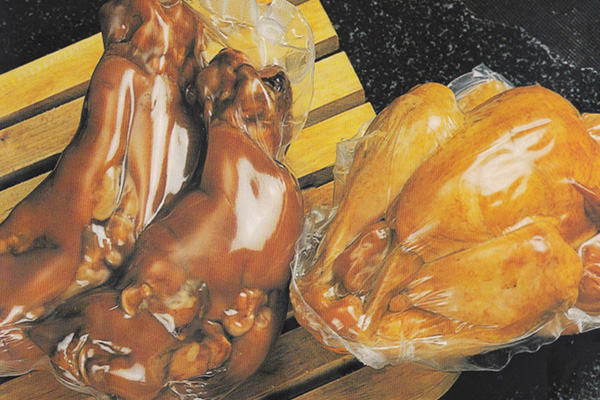Processed meats refer to meats that have been modified or transformed through various techniques such as curing, smoking, or canning. These meats include sausages, bacon, ham, and hot dogs, among others. These processed meats are popular worldwide, but there is a growing concern about the health risks associated with them. In this article, we will explore how processed meats are made.
Curing is one of the oldest techniques for preserving meat. Curing typically involves the use of salt, nitrates, or nitrites to preserve and flavor the meat. Salt is the primary curing agent, and it helps to inhibit the growth of bacteria that cause spoilage. Nitrates and nitrites are used to preserve the color and flavor of the meat and prevent the growth of harmful bacteria.
The curing process involves rubbing the meat with a mixture of salt, sugar, and curing agents, and then allowing the meat to sit in a cool place for several days to several weeks. During this time, the curing agents penetrate the meat, killing off bacteria and preserving it.
Vacuum packaging film is one of the best solutions for packaging meat. Because vacuum packaging extends the shelf life of the product, it is ideal for ready-to-use products. The vacuum skin packaging bags save space and are easy to store. Besides storing frozen meat, this breathable vacuum packaging film can also be used for vacuum storage of vegetables, sausages, seafood, dried fruits, tea leaves, etc.

T100 Multilayers Vacuum Skin Film Bags
Smoking is another popular method of processing meat. Smoking involves exposing the meat to smoke from burning wood or other materials. The smoke adds flavor and helps to preserve the meat. The heat from the smoking process also helps to cook the meat, making it safe to eat.
There are two main types of smoking: cold smoking and hot smoking. Cold smoking involves smoking the meat at a temperature between 20°C and 30°C, while hot smoking involves smoking the meat at a temperature between 60°C and 80°C. Polyamide (nylon) plastic casings are most commonly used for packaging a variety of sausages, hams, and luncheon meats.
Fermenting is another method of processing meat that has been used for centuries. Fermenting involves the use of bacteria or yeast to break down the sugars and proteins in the meat. This process produces lactic acid, which lowers the pH of the meat and makes it more acidic, inhibiting the growth of harmful bacteria.
Fermenting is often used to make sausages, such as salami, pepperoni, and chorizo. The process typically involves grinding the meat, mixing it with salt, sugar, and spices, and then adding a starter culture of bacteria. The mixture is then left to ferment for several days to several weeks.
C500 Sausage Packaging 5 Layers Nylon Casings
Canning is a method of processing meat that involves sealing it in an airtight container and then heating it to a high temperature to kill off any bacteria. The high temperature also helps to cook the meat, making it safe to eat.
Canning is often used to make canned meats, such as canned ham, canned corned beef, and canned chicken. The process typically involves cooking the meat, placing it in a can, and then sealing the can. The can is then heated in a pressure cooker to a temperature of at least 115°C to kill off any bacteria.
Grinding and forming is a common method of processing meat that is used to make products such as hot dogs, sausages, and lunch meat. This process involves grinding up the meat, mixing it with water, salt, and other ingredients, and then forming it into the desired shape.
The grinding process can introduce bacteria into the meat, which is why it is important to cook processed meats thoroughly before eating. Many processed types of meat, such as hot dogs, are also smoked or cooked at high temperatures to ensure that they are safe to eat.
In conclusion, processed meats are a popular food worldwide, but there is a growing concern about the health risks associated with them. The methods used to process meat, such as curing, smoking, fermenting, canning, and grinding and forming, help to preserve and flavor the meat.